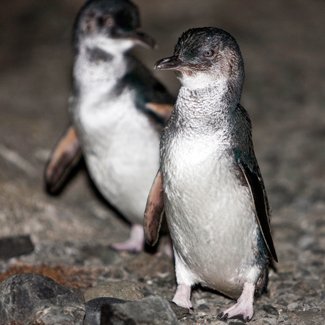Sniffer dog to track Sydney penguins

AN ENGLISH SPRINGER SPANIEL named Eco has the fate of hundreds in her hands.
The dog has been trained to protect the last remaining little penguin (Eudyptula minor) colony on mainland NSW.
She will sniff out the tiny endangered penguins – that stand about 30cm tall and weigh about 1kg when fully grown – as well as their biggest threats – foxes, dogs and cats.
This week marks Eco’s first official duty at work at Manly, in Sydney’s north.
“I’ve trained her to passively respond when she detects a penguin burrow,” her trainer Steve Austin says. “She first stops and stares at the area where the penguin has been detected and then she paws that area when asked `show me’. In contrast, when detecting foxes, Eco’s response is very active whereby she vigorously digs the area when she detects a fox den.”
Sniffer dog replaces work of 10 people
Steve says it takes Eco one hour to cover an area that would take 10 people four hours to monitor.
National Parks and Wildlife Services (NPWS) hope Eco will help them get a better understanding of the penguin’s numbers so they can plan protective measures.
“One of the challenging things about monitoring the little penguin population is determining the exact size of the colony and most importantly the breeding pairs,” NPWS regional manager, Gary Dunnett said in a statement on Monday. “Little Penguins are notoriously secretive, leaving for their fishing expeditions on night fall and returning in the pre-dawn light.
“Eco will be used today to try and find nests we previously haven’t known about which will allow us to monitor any adults and chicks and also to map where they are nesting against where the currently protected areas are.”
Currently, the only known mainland breeding colony in the state is in a secluded cove in the Manly area of Sydney Harbour, the NSW Office of Environment and Heritage says.
This colony, which once numbered in the hundreds now only has about 60 pairs of birds. It has been declared an endangered population.
RELATED STORIES

